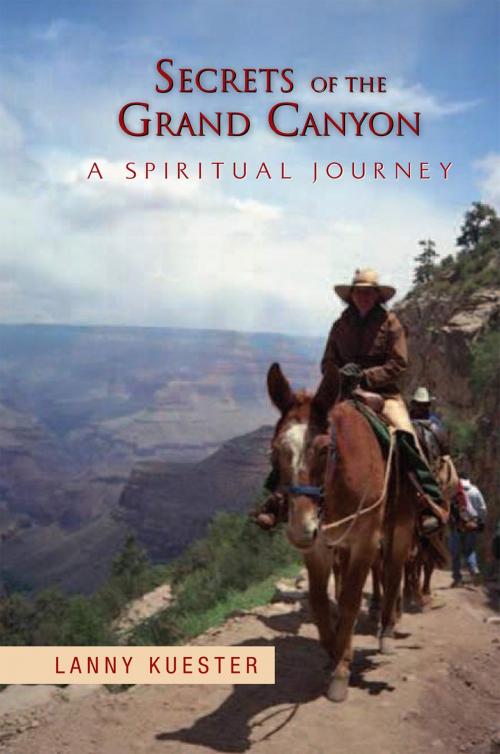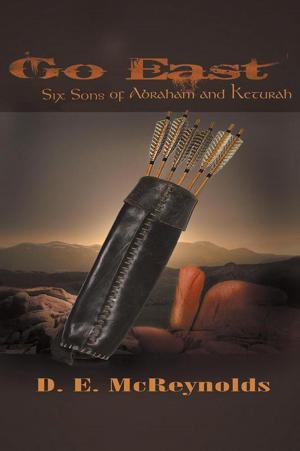Secrets of the Grand Canyon
A Spiritual Journey
Nonfiction, Travel, United States, West, Health & Well Being, Self Help, Mental Health, Death, Grief, Bereavement, Family & Relationships| Author: | Lanny Kuester | ISBN: | 9781456833015 |
| Publisher: | Xlibris US | Publication: | December 21, 2010 |
| Imprint: | Xlibris US | Language: | English |
| Author: | Lanny Kuester |
| ISBN: | 9781456833015 |
| Publisher: | Xlibris US |
| Publication: | December 21, 2010 |
| Imprint: | Xlibris US |
| Language: | English |
The next step in the journey brought us to a sturdy Park Service bus waiting nearby. According to guidebooks, this bus would carry us to the top of the South Kaibab Trail. Amy and I climbed up the steps and down the narrow aisle lugging our backpacks loaded with sleeping mats, clothes and food. The water, a gallon for each of us, gurgled reassuringly in plastic bottles.
We sat down near the back of the bus. After waiting for late arrivals, the bus driver closed the squeaky door, started the bus, glanced at the rear-view mirror and shifted the gears. The driver, a frumpy, middle-aged woman with hints of gray in her hair, started her route with a slight lurch of the bus. Even at this early hour, several people got on and off at various trailheads and scenic overlooks that lined the rim of the Canyon. The driver seemed relaxed and friendly.
I felt a mixture of rising anticipation and panic sweep over me as we moved from the known into the unknown. One part of me felt giddy with exhilaration as we neared the trailhead. Another cautious part inside wanted answers and a reassurance I could not supply. This voice began with the usual question, Now what did we forget to pack? Other questions nagged at me beneath the surface. What am I doing? Am I getting in way over my head? I felt embarrassed and reluctant to share my reservations with Amy at this early stage of our journey.
Amy silently gazed out the window as the bus bumped along. Several other people on board spoke quietly, but with eager, nervous voices. One younger couple sat quietly, staring out at the passing trees, clear sky and a few scattered park buildings. Time seemed to shift during that ride to the top of the South Kaibab trail.
Even through the windows, the views from the top of the Canyon were magical. The elevation on the South Rim of the Canyon reached over 7,000 feet. At certain points, we saw visitors walking along the edge to admire the scenery. I had visited the Canyon just once during a winter vacation to Arizona with my ex-wife just a few years before. Unfortunately, the trail was icy at the time and we cautiously hiked down only a short distance before turning back. Like most awestruck tourist, I spent the previous visit walking along the rim, snapping too many pictures and admiring the views from the top of the Canyon.
As we gazed out the window of the bus, I could catch glimpses of the same views that enchanted me years before. I recalled that at certain points along the rim you could catch a glimpse of the Colorado River almost a mile below, although the folds and contours of the Canyon walls usually hide it. During the ride, all of our plans for hiking down into the Canyon took on a new reality. I finally realized in the pit of my stomach that we were really going on this trek and that we were going to be descending an entire mile in elevation carrying a heavy backpack every step of the way.
To calm my inner turmoil, I reviewed once again why we had chosen the South Kaibab Trail to reach the Colorado River. For one thing, it offered a rich history. The South Kaibab consisted of a six-mile hike down a steep track first used by natives who, legend has it, followed a game path into the Canyon. Later, in the nineteenth century, miners searching for gold and silver widened and developed the trail. By the beginning of the twentieth century, most of the mines proved unprofitable and the miners abandoned them. However, the trails the miners developed became popular with the growing number of tourists drawn to the Canyon. During the 1930s, the park service started improving and maintaining a number of these trails into the Canyon, including the South Kaibab Trail.
The South Kaibab quickly gained a reputation for its beauty. Many hikers selected this route because, unlike other popular routes, it often followed ridgelines and offered a number of unobstructed views of the Canyon. However, the trai
The next step in the journey brought us to a sturdy Park Service bus waiting nearby. According to guidebooks, this bus would carry us to the top of the South Kaibab Trail. Amy and I climbed up the steps and down the narrow aisle lugging our backpacks loaded with sleeping mats, clothes and food. The water, a gallon for each of us, gurgled reassuringly in plastic bottles.
We sat down near the back of the bus. After waiting for late arrivals, the bus driver closed the squeaky door, started the bus, glanced at the rear-view mirror and shifted the gears. The driver, a frumpy, middle-aged woman with hints of gray in her hair, started her route with a slight lurch of the bus. Even at this early hour, several people got on and off at various trailheads and scenic overlooks that lined the rim of the Canyon. The driver seemed relaxed and friendly.
I felt a mixture of rising anticipation and panic sweep over me as we moved from the known into the unknown. One part of me felt giddy with exhilaration as we neared the trailhead. Another cautious part inside wanted answers and a reassurance I could not supply. This voice began with the usual question, Now what did we forget to pack? Other questions nagged at me beneath the surface. What am I doing? Am I getting in way over my head? I felt embarrassed and reluctant to share my reservations with Amy at this early stage of our journey.
Amy silently gazed out the window as the bus bumped along. Several other people on board spoke quietly, but with eager, nervous voices. One younger couple sat quietly, staring out at the passing trees, clear sky and a few scattered park buildings. Time seemed to shift during that ride to the top of the South Kaibab trail.
Even through the windows, the views from the top of the Canyon were magical. The elevation on the South Rim of the Canyon reached over 7,000 feet. At certain points, we saw visitors walking along the edge to admire the scenery. I had visited the Canyon just once during a winter vacation to Arizona with my ex-wife just a few years before. Unfortunately, the trail was icy at the time and we cautiously hiked down only a short distance before turning back. Like most awestruck tourist, I spent the previous visit walking along the rim, snapping too many pictures and admiring the views from the top of the Canyon.
As we gazed out the window of the bus, I could catch glimpses of the same views that enchanted me years before. I recalled that at certain points along the rim you could catch a glimpse of the Colorado River almost a mile below, although the folds and contours of the Canyon walls usually hide it. During the ride, all of our plans for hiking down into the Canyon took on a new reality. I finally realized in the pit of my stomach that we were really going on this trek and that we were going to be descending an entire mile in elevation carrying a heavy backpack every step of the way.
To calm my inner turmoil, I reviewed once again why we had chosen the South Kaibab Trail to reach the Colorado River. For one thing, it offered a rich history. The South Kaibab consisted of a six-mile hike down a steep track first used by natives who, legend has it, followed a game path into the Canyon. Later, in the nineteenth century, miners searching for gold and silver widened and developed the trail. By the beginning of the twentieth century, most of the mines proved unprofitable and the miners abandoned them. However, the trails the miners developed became popular with the growing number of tourists drawn to the Canyon. During the 1930s, the park service started improving and maintaining a number of these trails into the Canyon, including the South Kaibab Trail.
The South Kaibab quickly gained a reputation for its beauty. Many hikers selected this route because, unlike other popular routes, it often followed ridgelines and offered a number of unobstructed views of the Canyon. However, the trai















